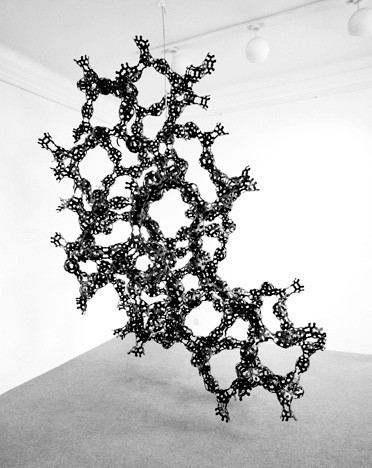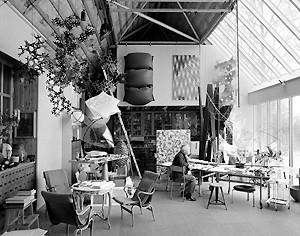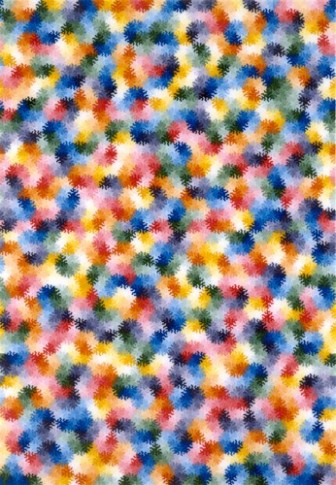
Lars Englund, Pars pro toto, 1979 © Lars Englund. Photo: Jan Almerén
From surface to volume
Pars pro toto (the part for the whole) is about spatiality. With bulging shields and hanging structures, Lars Englund develops a specific shape in every direction – in three dimensions or as two-dimensional images. In the mid-1960s he launched production of his first variable plastic modules. Linked, one by one, these identical, mass-produced parts can be used to build expanding structures.
Lars Englund’s spheres are both orb and space at the same time. “The sphere is characterised by uniformity, and yet it can be manipulated. The sphere is a materials test,” he says. He has returned to this shape repeatedly over the years. The earliest spheres were distinctly related to the support structure project and have the same concrete expression, with steel fasteners and rubber joins. In the 1990s the spheres made a new appearance, this time as ethereal and weightless borderlines.
Relative and entanglements explore how different shapes influence and relate to one another. In the early versions, black bands formed dynamic constellations in the air. Several of the large, space-defining objects are made of carbon fibre, a material that is extremely strong in relation to its weight, just like the spring steel and beryllium bronze Englund also uses in his relative and entanglements.
The group stabiles and instabiles dates from the late-1980s. Instabiles are the wind-powered mobiles. The motorised works he called wings developed out of his growing fascination for sound, the most immaterial of all materials. The wing describes the turbulence in the air and the ripples of sound in space. The group stabiles are related to a series of furniture which Englund designed in the 1990s. The leg construction for the furniture inspired the so-called stabiles, sculptures executed in metal or blackened wood and anchored firmly to the floor.
Curator: Cecilia Widenheim


